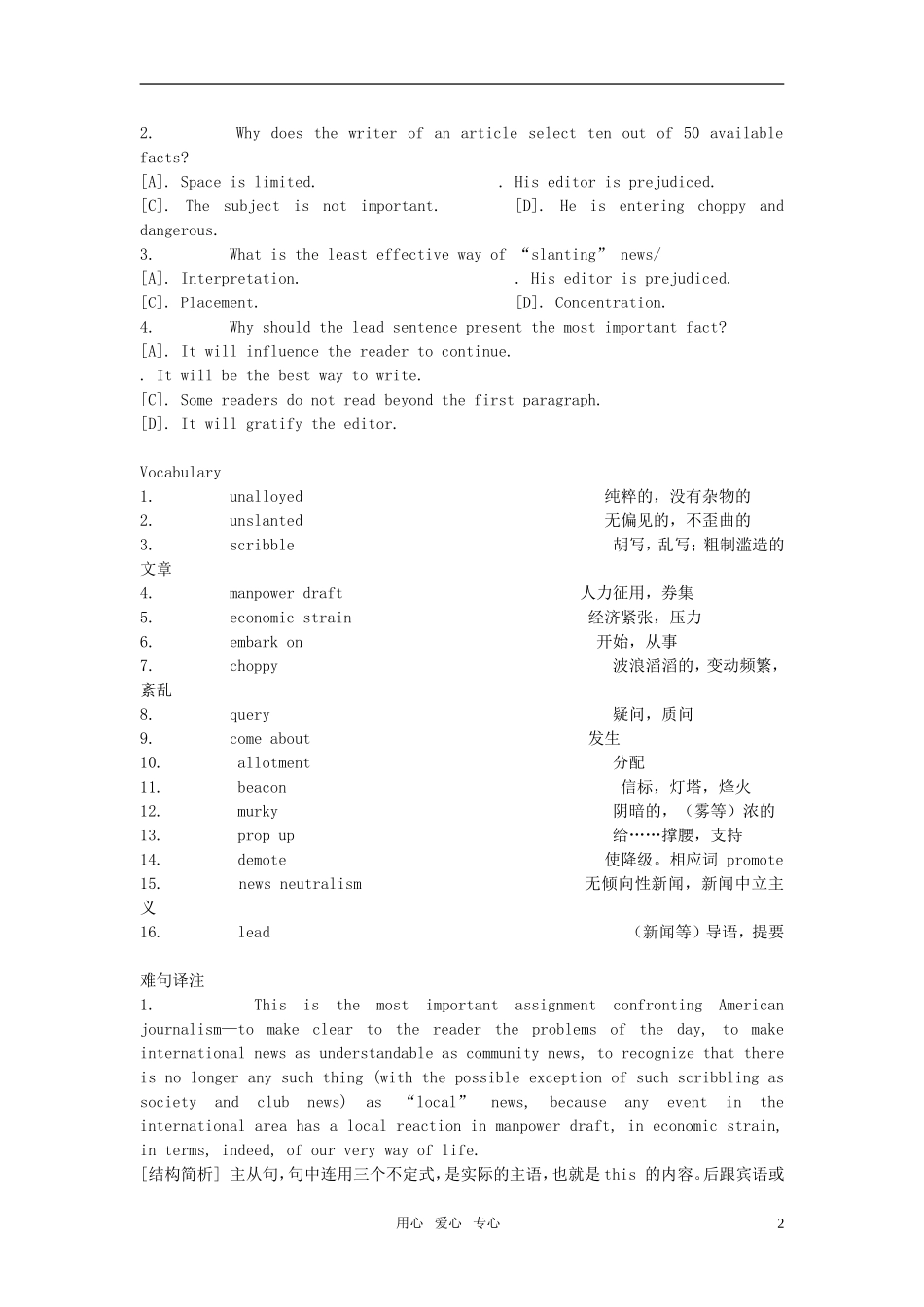2012 高考英语:阅读理解课堂练学案(25)Passage Twenty-seven (Analysis and Interpretation of the News) The newspaper must provide for the reader the facts, unalloyed, unslanted, objectively selected facts. But in these days of complex news it must provide more; it must supply interpretation, the meaning of the facts. This is the most important assignment confronting American journalism—to make clear to the reader the problems of the day, to make international news as understandable as community news, to recognize that there is no longer any such thing (with the possible exception of such scribbling as society and club news) as “local” news, because any event in the international area has a local reaction in manpower draft, in economic strain, in terms, indeed, of our very way of life. There is in journalism a widespread view that when you embark on interpretation, you are entering choppy and dangerous waters, the swirling tides of opinion. This is nonsense. The opponents of interpretation insist that the writer and the editor shall confine himself to the “facts”. This insistence raises two questions: What are the facts? And: Are the bare facts enough? As to the first query. Consider how a so-called “factual” story cones about. The reporter collects, say, fifty facts; out of these fifty, his space allotment being necessarily restricted, he selects the ten, which he considers most important. This is Judgment Number One. Then he or his editor decides which of these ten facts shall constitute the lead of the piece (This is important decision because many readers do not proceed beyond the first paragraph.) This is Judgment Number Two. Then the night editor determines whether the article shall be...


